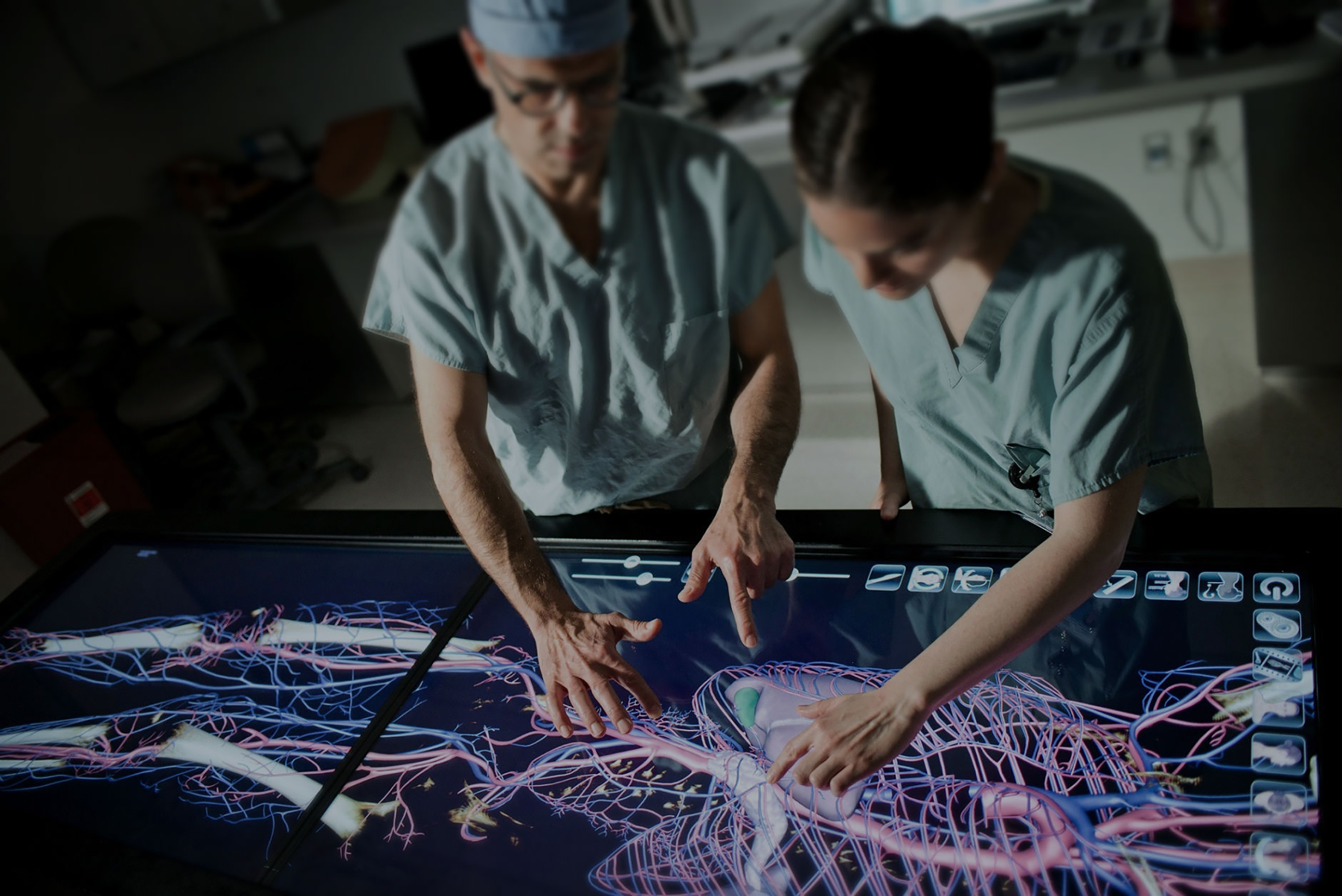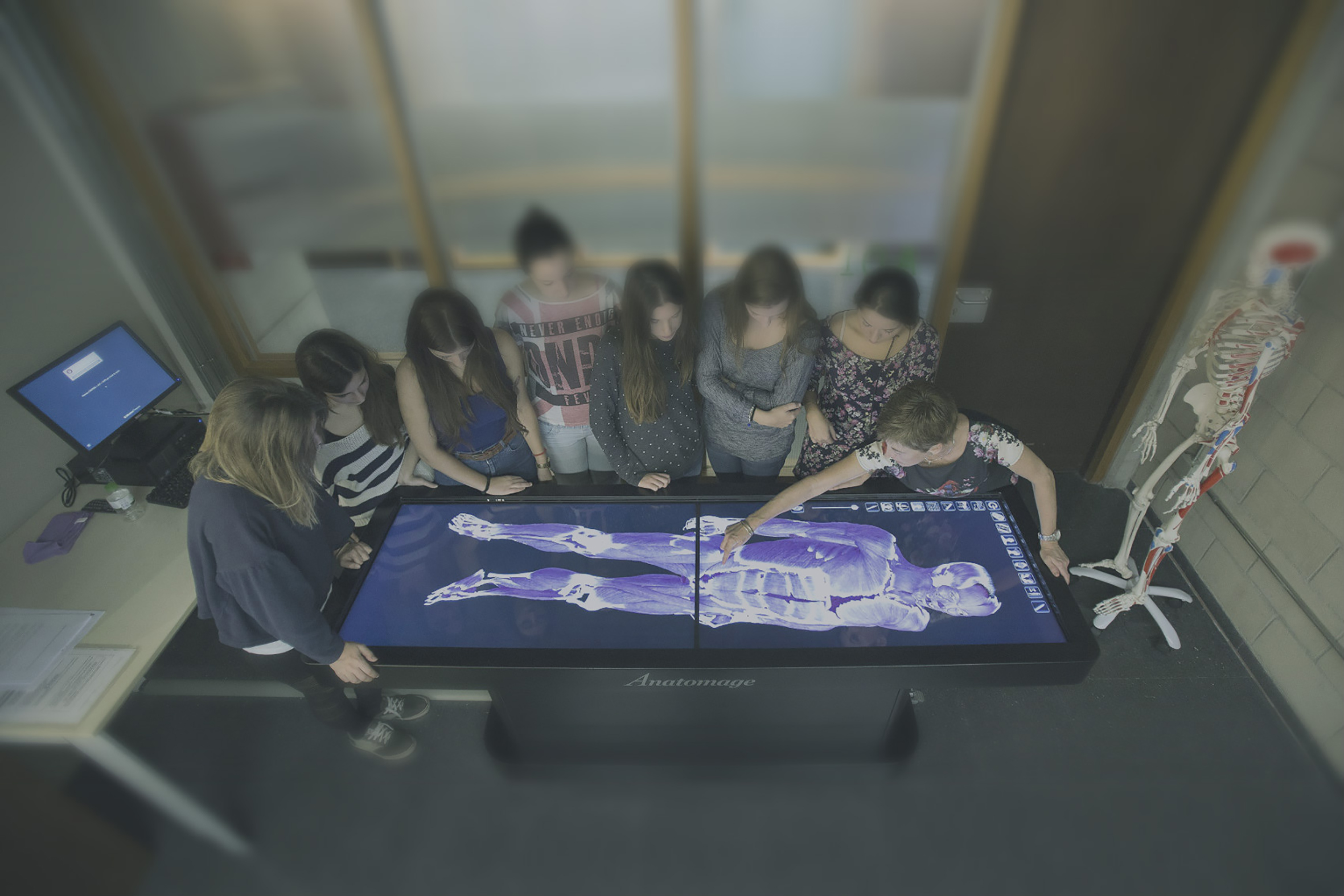HFC’s Virtual Cadaver

A state of the art virtual cadaver, known as an Anatomage Table provides Henry Ford College anatomy and physiology students a chance to experience the beauty of the human body in 3D. HFC faculty chair of the biology department, Carla Serfas, shares why new advances such as these are increasing at colleges. Serfas observes, “Once a human cadaver is dissected, you can re-use it again in a limited way, but it degrades rapidly. This Anatomage Technology enables us to use and re-use the same ‘cadaver’ indefinitely, without previous dissections affecting how students see the anatomical structures.”
One of the main places students have been able to study the human anatomy is the biology tutoring lab in the Learning Success Center. Chardin Claybourne, coordinator of the Learning Lab who helps manage the biology tutoring lab, says, “An estimated 22 hundred students visit the lab.” The biology tutoring lab was installed in the Learning Lab in 2013. Claybourne says, “Students who receive tutoring in biology have a strategically higher success rate versus a student who does not use it. These students also show improved test scores over all. The biology tutoring lab gives students a place to go to get professional help with courses which helps to improve strategy. Faculty enjoy it because it’s a great way for students to get the help they need outside of the classroom to help improve success. Students that tutor here were once students themselves taking these very classes and are now able to help others, paying it forward and helping others as they go.”
Serfas explains how the Anatomage Table compares to the plastic models used in the biology tutoring lab: “We’ve previously worked on plastic models and so this is a little bit different. The plastic models are glued together which means you can’t pull much of the parts apart. Here you can kind of get deeper in and get a better look at the tissues.” Serfas goes on to explain how the Anatomage Table is better for the environment. At a professional conference, Serfas learned of the virtual cadaver “by someone who has issues with doing dissections on actual structures. Because of things like PETA people don’t want to dissect structures from animals.”
While biology students have conducted dissections, Serfas explains some of the limitations of that traditional method of learning biology: “In my lab I do a couple of dissections here and there whether it be a sheep heart or brain but it’s not something that we have a ton of funding for and the rooms aren’t really set up for large scale dissections. There’s not good ventilation.”
Teaching biology has become much more reliant on technology. “All the things we’ve done we have videos that faculty have made that are on YouTube,” Serfas says. Serfas still encourages use of the plastic models in the biology tutoring lab: “You get a good experience in the Learning Lab too because we have all of the models that are almost the same models that are in the labs for classroom are over there as well. The best part about that is that if you have ever been through lab and you’ve done the things with your instructor then you can go over to the Learning Lab and get some more hands on as well as one-on-one. Sometimes it can be hard for an instructor who has 24 students to individualize everything for everybody. When you go over to the Learning Lab there will be all these great peer tutors that have aced the classes and know all their stuff and they give you a really good one-on-one experience; it’s more specialized. I actually spend a couple of hours a week over there myself as a faculty tutor. I love it because then I can interact with my own students as well as others and give them tips and tricks to help them out and it would be great if we could translate that over here a little bit too.”
The Anatomage Table is having a slow rollout so faculty and students can get used to it: “I have to work it out with the dean. I might be spending like every other Friday or so in here and have students sign up if they want to come in for 45 minutes to an hour to use it since not all the instructors are using it yet and I don’t know that all the instructors will because not all have expressed interest in getting trained on it and so it’s one of those things where me or maybe another full time faculty member will be sitting in here every Friday or so just having students come in and use it. So not a true open lab because they would have to sign up since this room’s space is limited but definately so that more people can get exposed to it.”
Serfas explains, “They’re probably going to be frustrated because it’s not exactly like touching. We can do slicing and things but it’s not like I can do this and peal that skin back. It’s not like a true dissection so that might be a challenge. Mostly what we are doing for the lab portion is sort of just identifying things and this does a really good job at that.” Serfas continues, “So there are two computer screens. They’re not actually touch screens. There’s a sensor all the way around the table, so I don’t even have to actually touch the screen because underneath there is a sensor bar that helps direct everything. Although after that it’s just like touch screen technology similar to your tablet or phone.”
The Anatomage Table was funded through a technology grant set aside for improving student learning. “It was around $80 thousand for the table. For the cords, and room renovations, it was just under $81 thousand. It was paid for through the Technology Investment Fund. So we have a group on campus and there is a little stock pile of money where instructors, faculty and staff can apply for the money to do cool things technology wise that are going to benefit students and the campus as well as the community in general,” explains Serfas.
Students who have had the opportunity to try the new virtual cadaver are “fascinated by it.” Serfas sees that this is where medicine and the study of human biology is headed. “If you’re going into a medical field which most of our AP students are, then you’re going to need to know that yeah this is the standard that you learned but there are variations around that. So it’s important to understand all of those things and this helps with that too.”

